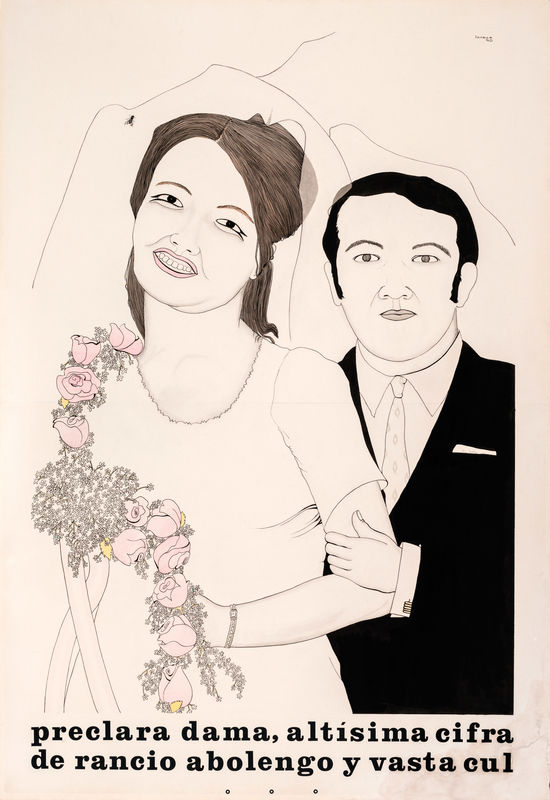
Clemencia Lucena, Artist
Preclara dama, altísima cifra de rancio abolengo y vasta cul (Illustrious lady of noble birth and vast cul)
, 1970
The works of Clemencia Lucena highlight "feminine virtues" to mock the roles women played at a moment in the twentieth century when differences between sex and gender were being questioned in unprecedented ways. She dissects the figures of the bride, the woman of high birth, and the beauty queen in strategically crude drawings that sarcastically dismantle the myth of femininity as a synonym for purity, beauty, and distinction. Preclara dama, altísima cifra de rancio abolengo y vasta cul depicts a couple on their wedding day—that is, the only day when the wife will be the center of attention. From this point onward she will have to follow the "godly" plan of abnegation and procreation. For these pieces the artist copied photographic portraits from the social sections of newspapers, enlarged fragments, and then cropped the news clippings in such a way as to decontextualize them by removing part of the headline and the content around it.
Clemencia Lucena se vale de la ironía cuando destaca las 'virtudes femeninas' por excelencia para burlarse de los roles de las mujeres en un momento determinado en el que se cuestionan, como nunca antes en el siglo XX, las diferencias entre sexo y género. En sus obras disecciona las figuras de la novia, la mujer de alcurnia y la reina de la belleza, por medio de dibujos deliberadamente burdos que desmontan sarcásticamente el mito de la feminidad como sinónimo de pureza, belleza o distinción. Preclara dama, altísima cifra de rancio abolengo y vasta cul representa una pareja en el día de su boda, o sea cuando por única vez la esposa es la protagonista. A partir de ese momento deberá seguir el plan 'divino' de abnegación y procreación. Para estas obras la artista copió varios retratos fotográficos de las notas sociales del periódico, ampliando fragmentos y recortando el texto, quitando el titular y elementos afines para descontextualizar las noticias.


